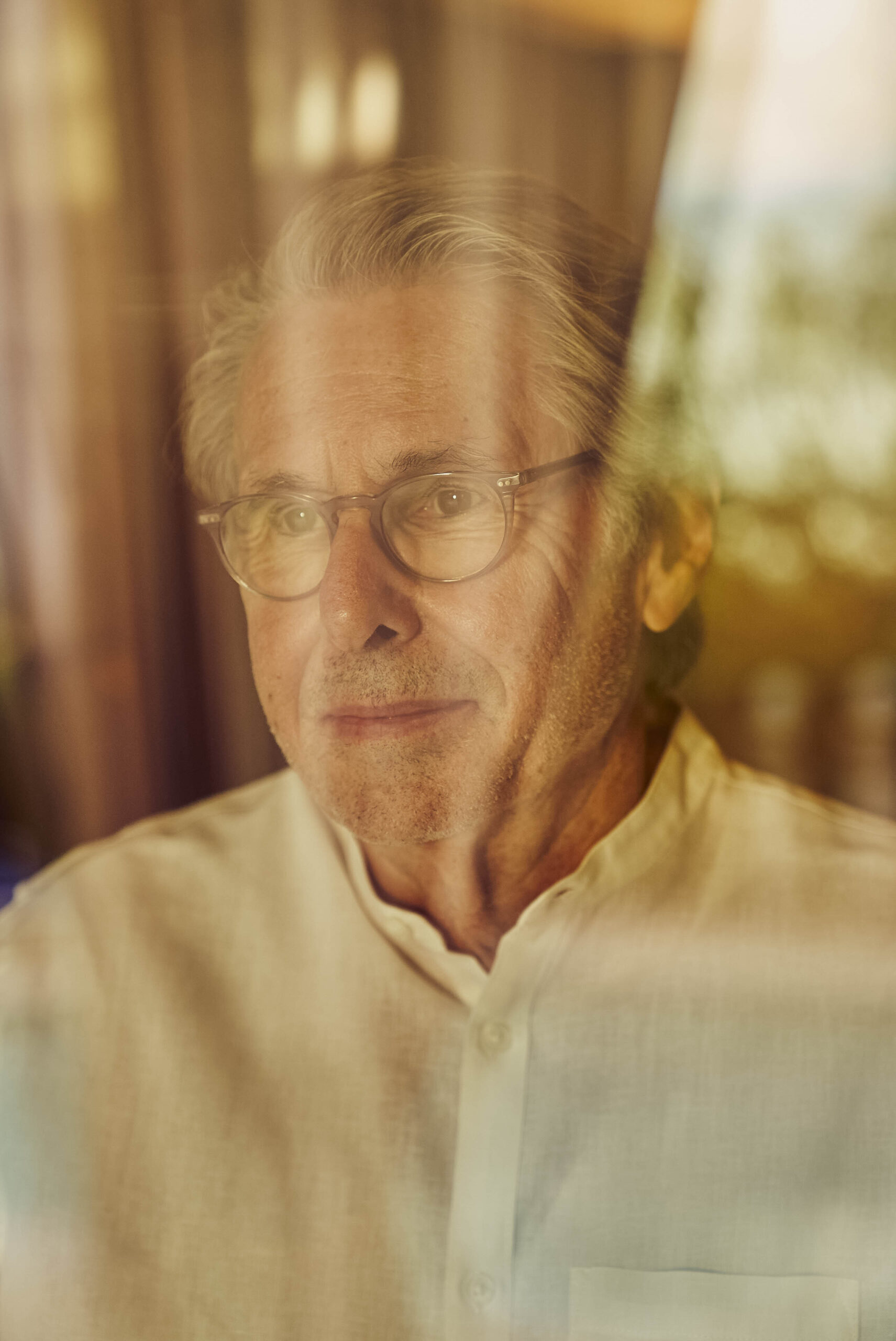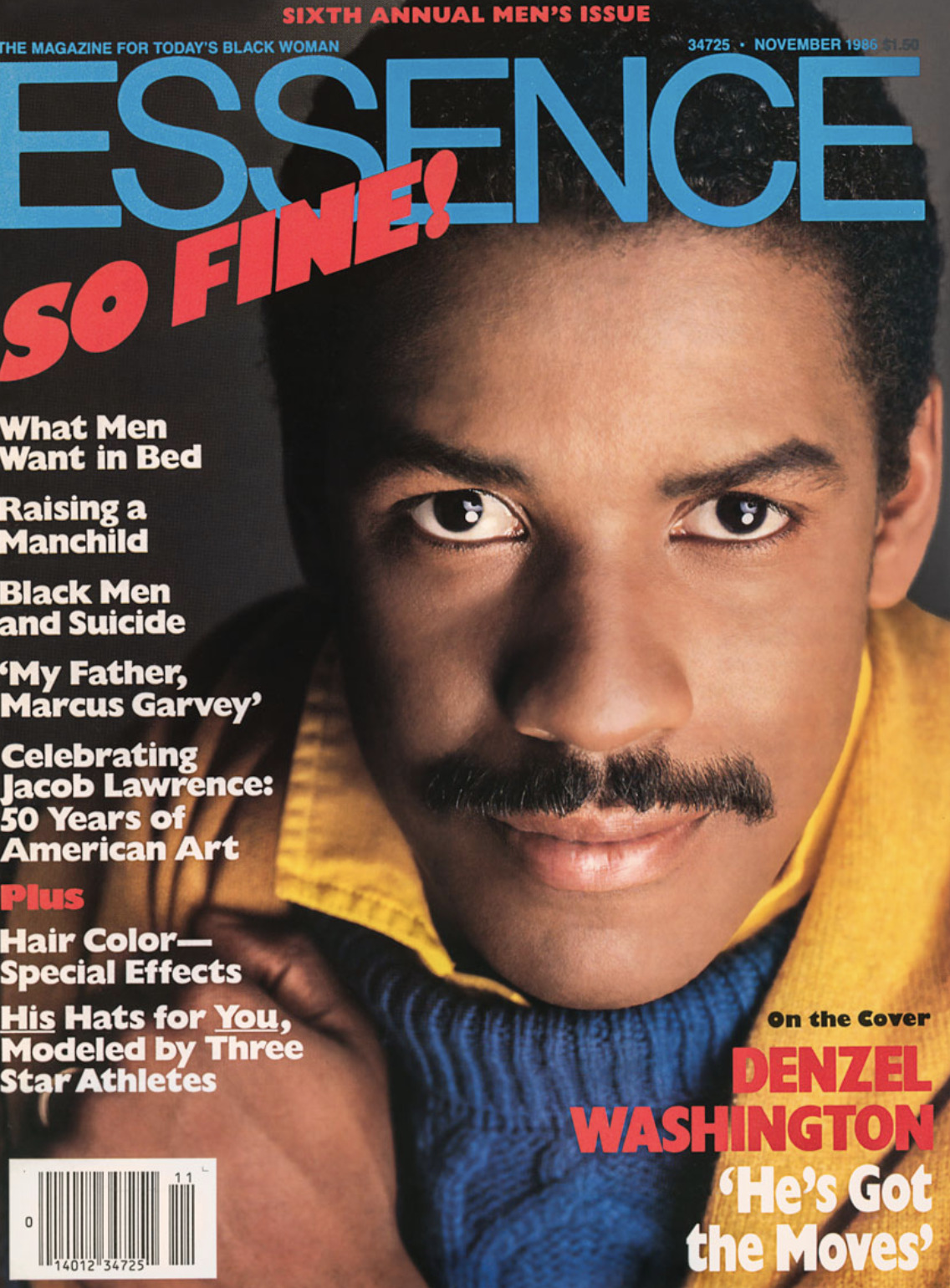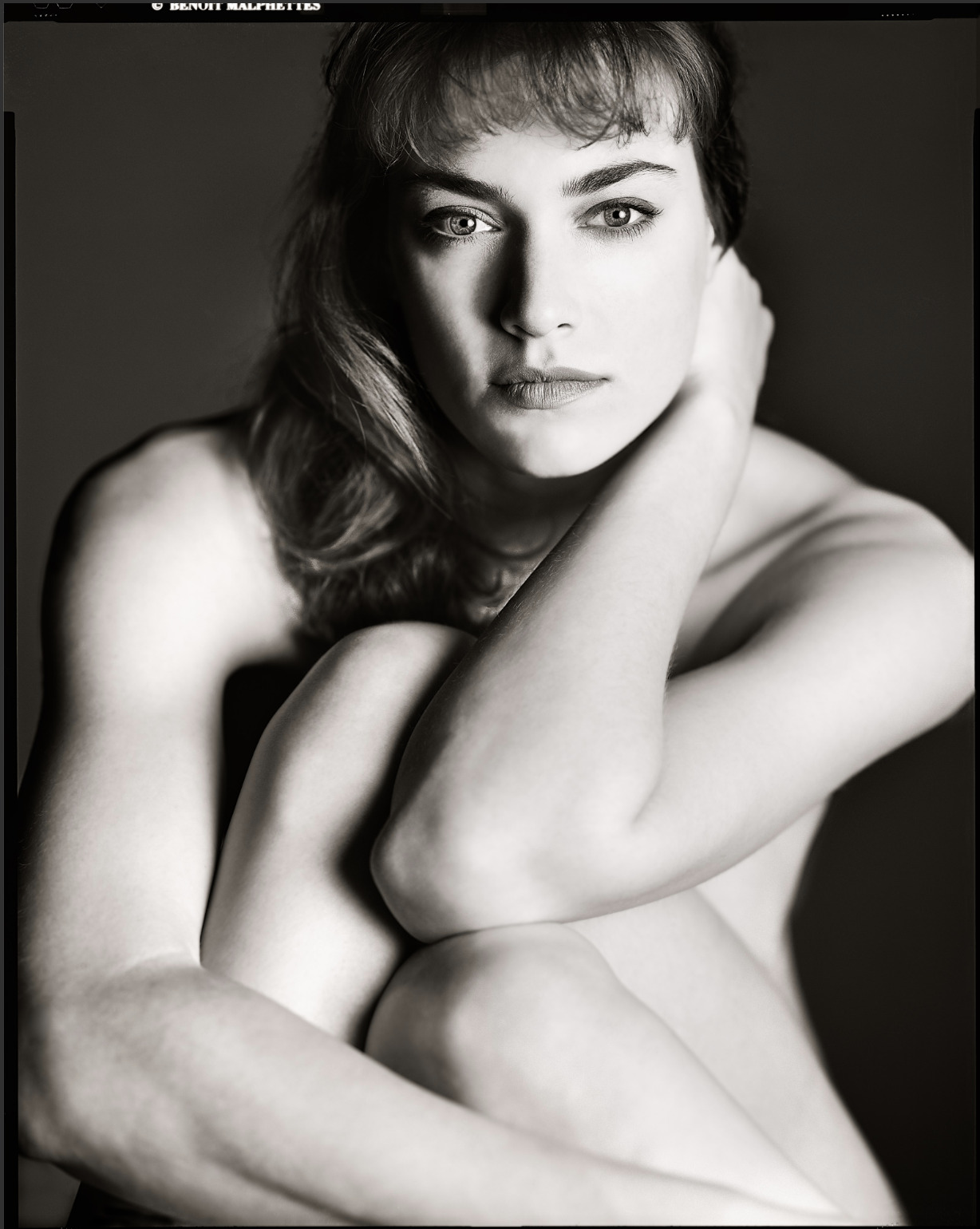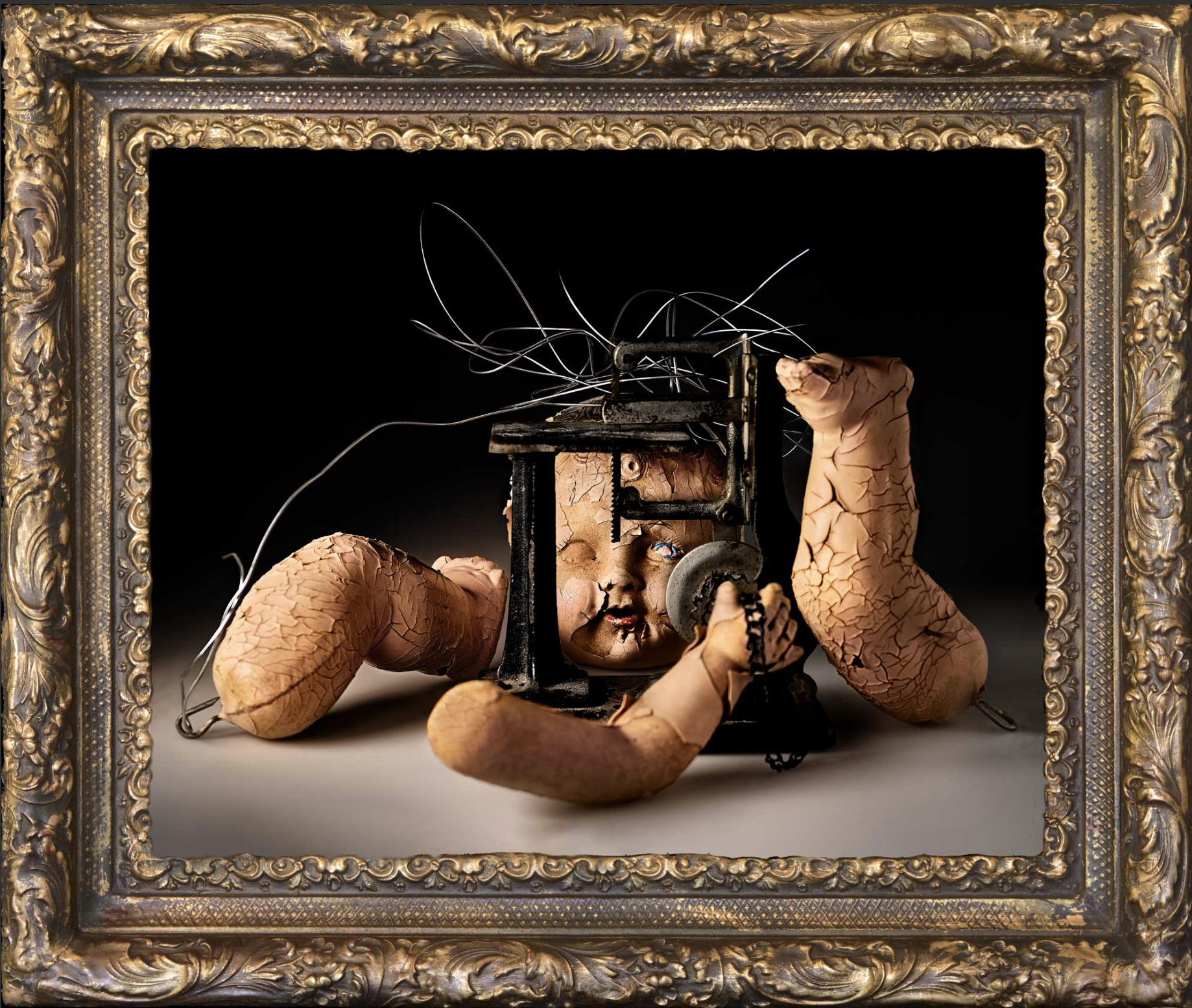Approaching 80, and freed from the bounds of commercial and fashion photography, Benoit is soaring in new visual adventures, fully realizing the magic of his childhood dream: taking pictures just for the art of it. His journey is a shining example that art has no age; neither does determination nor the ambition to create originality. Our dreams may have been sidetracked, but they still burn, waiting for a moment to come to life. For many of us, the question of “If not now, when?” is what is on our minds. Our time here could be tenuous; this is the moment to grasp that dream once more. Benoit did.
Benoit is a master technician from the days when photography required nerves of steel to walk a tightrope of technique and creativity. In those halcyon days, one never knew if the shoot really turned out until one went to the lab late that night and saw the actual film. There was no digital preview button; the photographer had to have faith that their mastery of the medium would carry them through. It was high drama. Having been at the pinnacle of the field and having worked with a number of the most famous faces of the time, Benoit is now represented in several museums and numerous private collections across the US and Europe such as New York’s MoMa exhibit, “Is Fashion Modern?” Since 2015, his work has been featured in three solo museum exhibitions and was part of the “Facing Fire” exhibit at the California Museum of Photography. His latest work, “Open to Interpretation,” is a series of introspective still lifes that was exhibited at San Bernardino County Museum in 2023 and was featured in Artdoc Magazine’s Conceptual Vision issue.
How old are you?
I’m 77 years old.
Where do you live and why do you live there?
In 2007, I retired from the commercial world of photography. My wife and I moved to Riverside, a more contemplative environment near the California desert. Amid an era where many are drawn towards a life of leisure, I perceived this opportunity as an avenue to immerse myself into a phase of conceptual exploration. This led me to establish a personal studio within my new home — an endeavor not solely driven by the desire for a tranquil space, but also the prospect of delving into a period of profound artistic innovation. Retiring no longer meant withdrawing from life, but engaging with it more deeply.
“Retiring no longer meant withdrawing from life, but engaging with it more deeply”
Do you have family?
Born in France, my brother Emmanuel and I immigrated to the United States in pursuit of our shared passion for photography. Emmanuel was a gifted fashion photographer renowned for his command of black and white film during the 1980s. We often shared clients in the fashion industry. His successful artistry inspired me to master my craft with collaboration and discipline. He passed away too young and, today, I persist in my life’s journey, accompanied by my wife who embodies the timeless essence of a devoted companion.

Could you tell us about the fashion photo world in the ’80s?
So different, so much more challenging: film, film, film, a very slim margin of error. We had to have an intricate knowledge of it all to work smoothly day in, day out. Photoshop was first sold in 1990; no Photoshop, no Capture One at the time.
In the dynamic realm of film photography during the 1970s and 1980s, the industry thrived on fierce competition. Film demanded an intricate mastery of both technical and chemical aspects to ensure flawless execution, day in and day out. Each color photograph, captured with an 8×10 camera, came at a significant cost. This delicate balance left us with an exceptionally narrow margin for error.
Everyone has access to a camera now. With film, the intentionality also differentiates the way we practiced and approached our work. Unlike today’s digital era, there were no lifelines in the form of editing software; all manipulations and enhancements took place in the darkroom. The creation of Photoshop in 1990, alongside software like Adobe Lightroom and CaptureOne, was still years away.

“In the dynamic realm of film photography during the 1970s and 1980s, the industry thrived on fierce competition”
Working in the fashion sphere added another layer of complexity, requiring quick adaptability to the creative team’s rigorous production schedules. This entailed coordinating with multiple professionals, including photo assistants, makeup artists, creative directors, models, stylists, and more. My tool of choice was exclusively the large 8×10 large format camera, demanding the utmost precision, focus, and intent in every shot. This preference also meant that models had to possess a high level of control over their craft to collaborate effectively. Additionally, being a successful fashion photographer mandated a presence in New York. By the 1980s, my professional base extended to both New York and Los Angeles. In Los Angeles, I established my personal studio.

Do you have any particularly memorable stories from back then?
Names more than stories: Cindy Crawford, Christie Brinkley, Jerry Hall, Carol Alt, Paulina, Gia, Kim Alexis, Janice Dickinson, Kelly Emberg, Kelly LeBrock, Tatjana, Yasmin, Renée Simonsen, Jill Goodacre and, my favorite of all time: Iman.

What are you doing now that you couldn’t do then?
The freedom of commercial constraint defines the work I do now. I have transitioned from the commercial fashion world to a personal fine art. In doing so, I learned to recognize the taste of the experience of making a deep psychological connection with the content of the picture. However, there are aspects of a photograph that can’t be expressed more clearly than the photograph itself; I let photographs speak for themselves.
Why still life?
To keep my sense of humor and not take myself too seriously, I will quote another French-American photographer, Elliott Erwitt, famous for photographing dogs: “I take a lot of pictures of dogs for two simple reasons: they don’t object to being photographed, and because they don’t ask for prints.” Similarly, still life is a focus in fine art I truly enjoy; the contemplative world of still life and slowness and skill it requires. I still use a large format camera with a digital back.
How is your process different now than it was back then?
My generation was composed of large format cameras which stressed the importance of technical mastery.
One of the big differences is the use of Photoshop and post processing.
What inspires you?
The journey of life, death, and psychoanalysis of my subconscious, mind, and life experiences.

“I value a balanced lifestyle to take care of myself”
How do you take care of yourself?
I value a balanced lifestyle to take care of myself. I journal, read, and meditate to decompress and recharge. I also partake in private Pilates sessions twice a week and do swimming.
Are there activities you enjoy outside of photography?
Swimming in my pool next to my studio.
How do you nurture your creativity?
Going in the studio and setting up a blank canvas. Letting the mind wander off. Let my mind wander when there are no objects, props, distractions but a blank canvas in front of me. I like to set up a mid-gray background because in post production I can add any colored background. Gray is the neutral color.
What music are you listening to?
It goes from Bob Dylan to Philip Glass and Travis Scott with some detour to Bach.

How do you take care of your body?
Nurturing both my mind and soul, my daily routine commences promptly at 5 am with four cups of coffee, a ritual that sustains my mental equilibrium. In the quietude of those early hours, I engage in reading the daily news from Bloomberg and journaling, a practice that allows me to pour my thoughts onto paper and meticulously chart the course of my day ahead. My self-care journey extends to the realm of physical wellbeing, where I vigilantly monitor my weight each morning, aiming to maintain it at a steady 156 lbs.
I make bi-weekly trips to Trader Joe’s, home of healthy alternative home cooking meals. In physical fitness, I engage in both workouts and Pilates sessions twice a week.
What is your favorite meal?
Anything that will keep my body healthy.
What are some of your favorite travel destinations?
To France, the heart of Dordogne, where I was born, and the Cap Ferret where I used to spend my summers as a child.
“My aspiration is to continue mentoring young photographers while maintaining my personal creative endeavors”
What are your ambitions for the next 10 years?
In French, there exists a poignant saying: Don’t close the door when you leave the building. When translated, it beautifully encapsulates the idea that before concluding our journey through life, it is our desire to leave the door open for the generations to follow. My aspiration is to continue mentoring young photographers while maintaining my personal creative endeavors. In the last two years, I have become a mentor to two photographers of the next generation. I find myself in a distinct phase of life, one that incites me to impart the wisdom I’ve gathered over the years to emerging photographers. I am committed to nurturing the creative spirit within me, which continues to drive my passion for photography as a means of self-discovery and pleasure.

Above all, my focus for the next decade centers on embracing the art of acceptance. I aim to cultivate a deeper understanding and appreciation of my true self, seeking inner peace and harmony as I traverse the final chapter of my life’s narrative. The ultimate objective is to attain personal fulfillment through the profound journey of self-love and self-acceptance.
What are the 3 non-negotiables in your life?
Integrity.
Reach the end in harmony with myself, my loved ones.
Be at peace with my conscience.
Connect with Benoit:
Website
Instagram
Portraits of Benoit by David Fouts.
LEAVE A REPLY
The ideas expressed here are solely the opinions of the author and are not researched or verified by AGEIST LLC, or anyone associated with AGEIST LLC. This material should not be construed as medical advice or recommendation, it is for informational use only. We encourage all readers to discuss with your qualified practitioners the relevance of the application of any of these ideas to your life. The recommendations contained herein are not intended to diagnose, treat, cure or prevent any disease. You should always consult your physician or other qualified health provider before starting any new treatment or stopping any treatment that has been prescribed for you by your physician or other qualified health provider. Please call your doctor or 911 immediately if you think you may have a medical or psychiatric emergency.




Encore drôlement bien conservé Le frérot et plutôt bel homme (comme nous tous, mais toi particulièrement)
Comment va ta chère épouse ?
Je t’embrasse.
Antoine